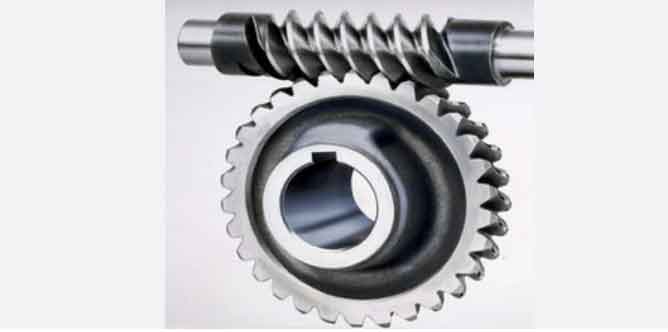
Helical gears are a type of cylindrical gear with slanted teeth that form a helix along the gear’s face. These gears are widely used in various mechanical systems due to their unique mechanics and numerous advantages. Let’s delve into the mechanics and advantages of helical gears:
Mechanics of Helical Gears:
Helical gears have teeth that are cut at an angle to the gear’s axis, forming a helix shape. The helix angle can vary, but typically it ranges from 15 to 45 degrees. The teeth engage gradually, starting at one end of the gear and advancing across the face. This gradual engagement results in smoother gear meshing compared to spur gears, which have straight teeth that engage suddenly.
The helix angle introduces an axial force component, known as axial thrust, which acts parallel to the gear’s axis. This axial thrust must be managed with appropriate bearings and support arrangements. Helical gears can be designed for parallel shafts or used with bevel gears to achieve right-angle power transmission.
Advantages of Helical Gears:
- Smooth and Quiet Operation: The gradual engagement of helical gear teeth leads to smoother and quieter operation compared to spur gears. The helical design reduces impact and noise during gear meshing.
- High Load-Carrying Capacity: The larger tooth contact area of helical gears enables them to distribute loads more evenly, leading to higher load-carrying capacities and greater durability.
- Efficiency: Helical gears offer higher efficiency compared to spur gears due to reduced sliding friction between teeth during meshing.
- Higher Gear Ratios: Helical gears can achieve higher gear ratios, making them suitable for applications requiring significant speed reduction or torque multiplication.
- Versatility: Helical gears find application in a wide range of industries, including automotive, aerospace, industrial machinery, power generation, and more.
- Right-Angle Power Transmission: When used in conjunction with bevel gears, helical gears can achieve right-angle power transmission.
- Improved Bearing Life: The smooth operation and reduced impact forces of helical gears result in less strain on bearings, leading to longer bearing life and reduced maintenance requirements.
- Higher Precision and Positioning: Helical gears provide reduced backlash, making them suitable for applications requiring precise motion control and accurate positioning.
- Reduces Axial Thrust: Helical gears generate less axial thrust compared to spur gears, reducing the need for additional thrust bearings or support arrangements.
- Customization: Helical gears can be easily customized to meet specific application requirements, such as gear ratios, materials, and tooth profiles.
Due to their numerous advantages, helical gears are commonly used in gearboxes, automotive transmissions, industrial machinery, and other power transmission systems where smooth, efficient, and reliable operation is essential. However, designers and engineers must consider the axial thrust generated by helical gears and provide adequate support and bearing arrangements to handle this load effectively. Proper lubrication and maintenance are also crucial for ensuring the long-term performance and reliability of helical gears.
